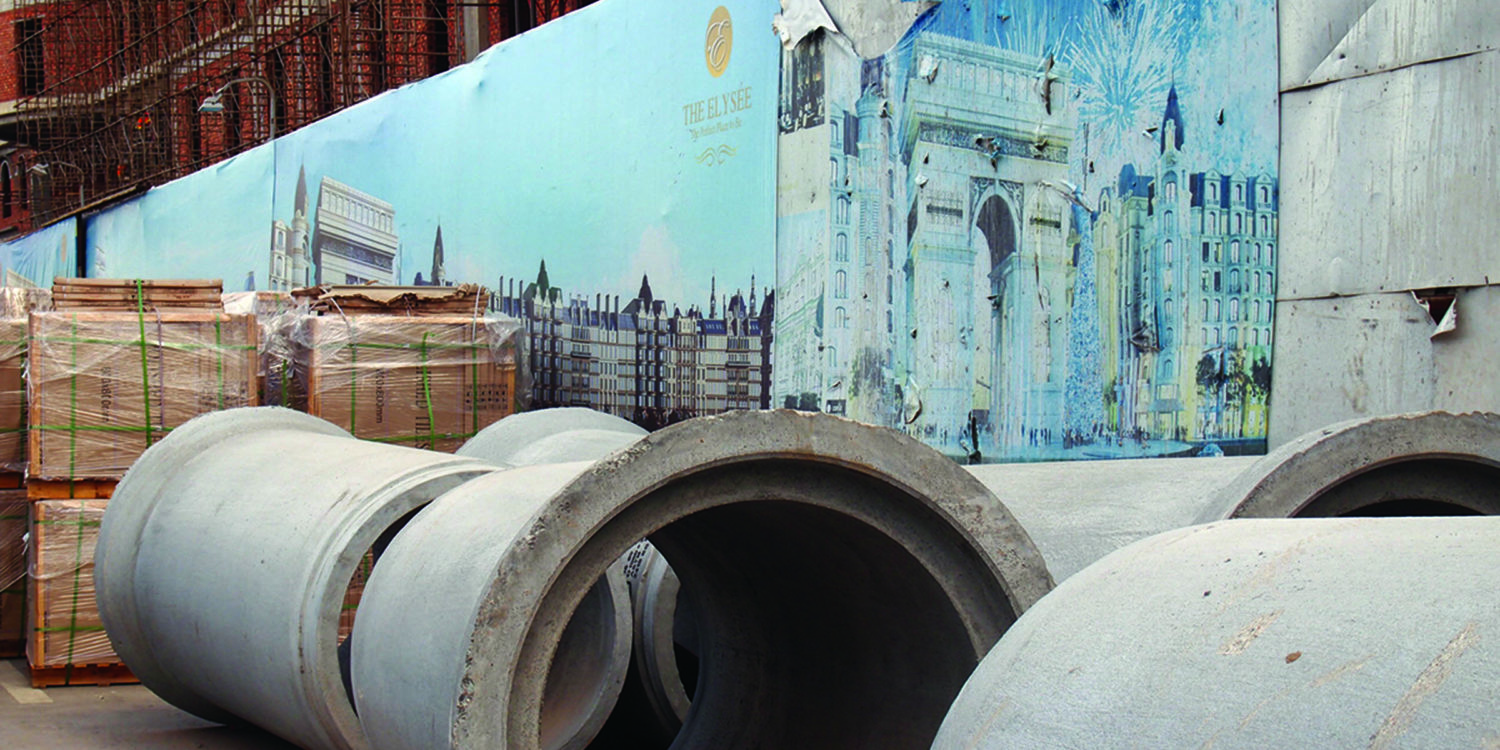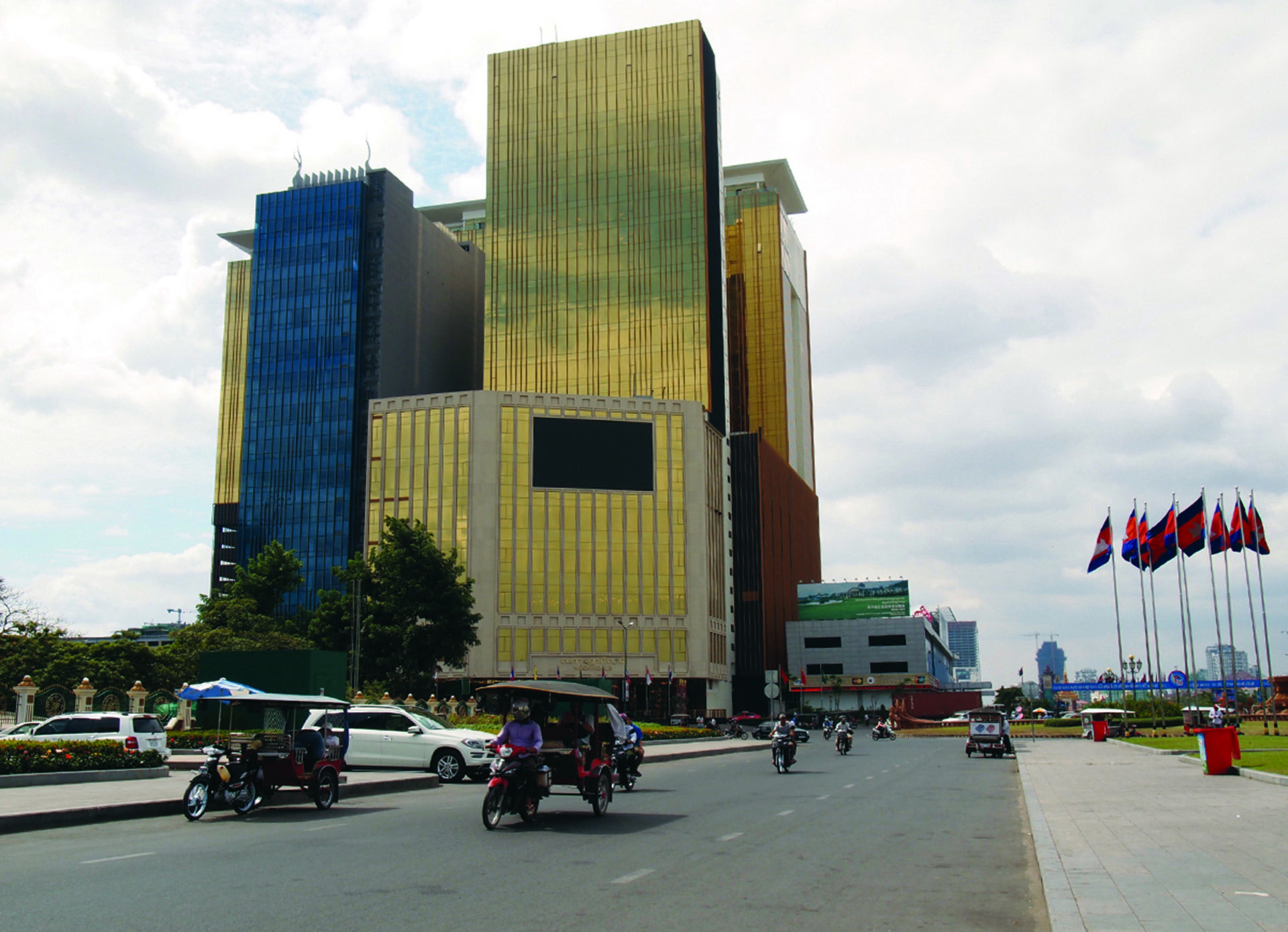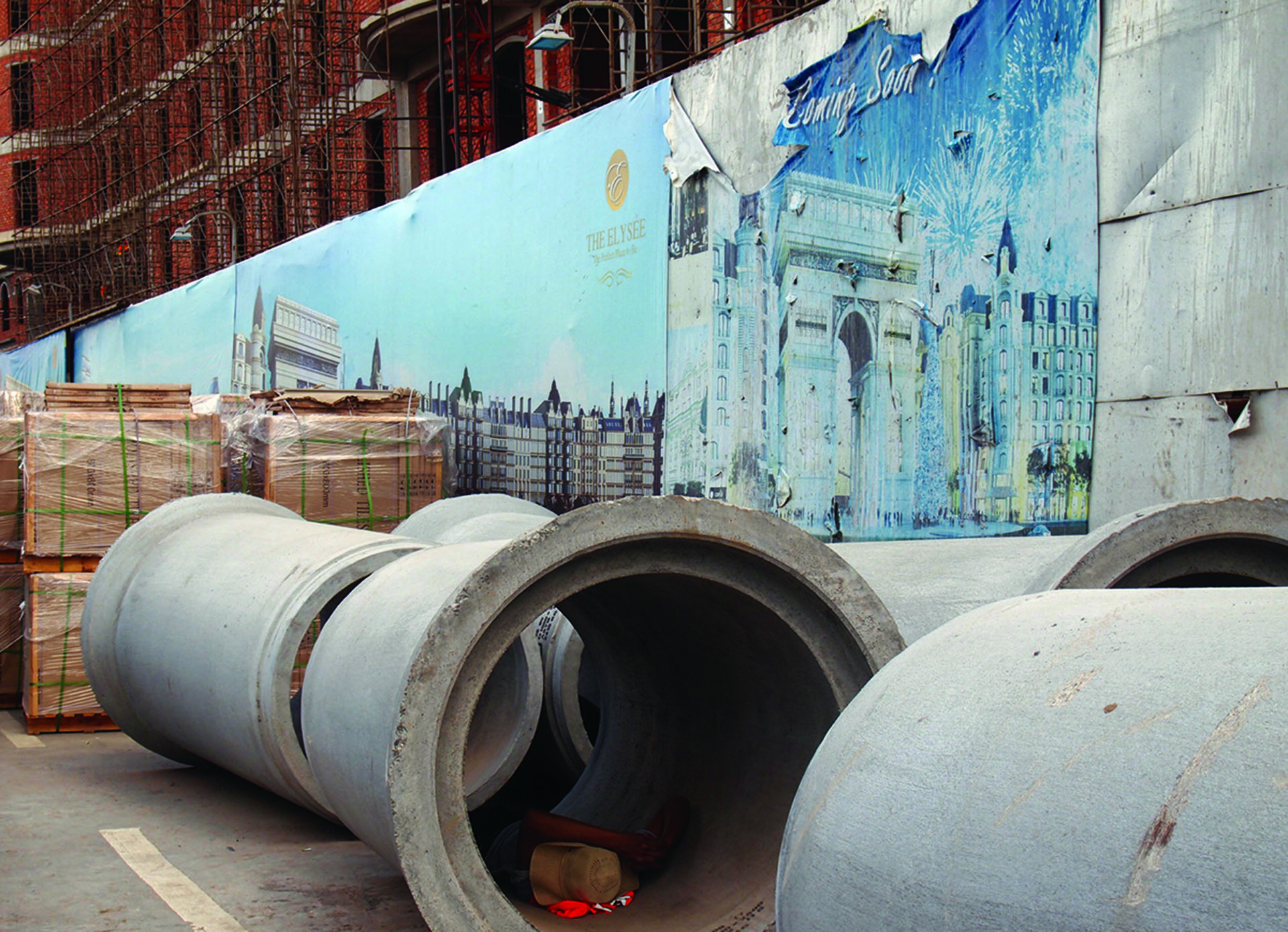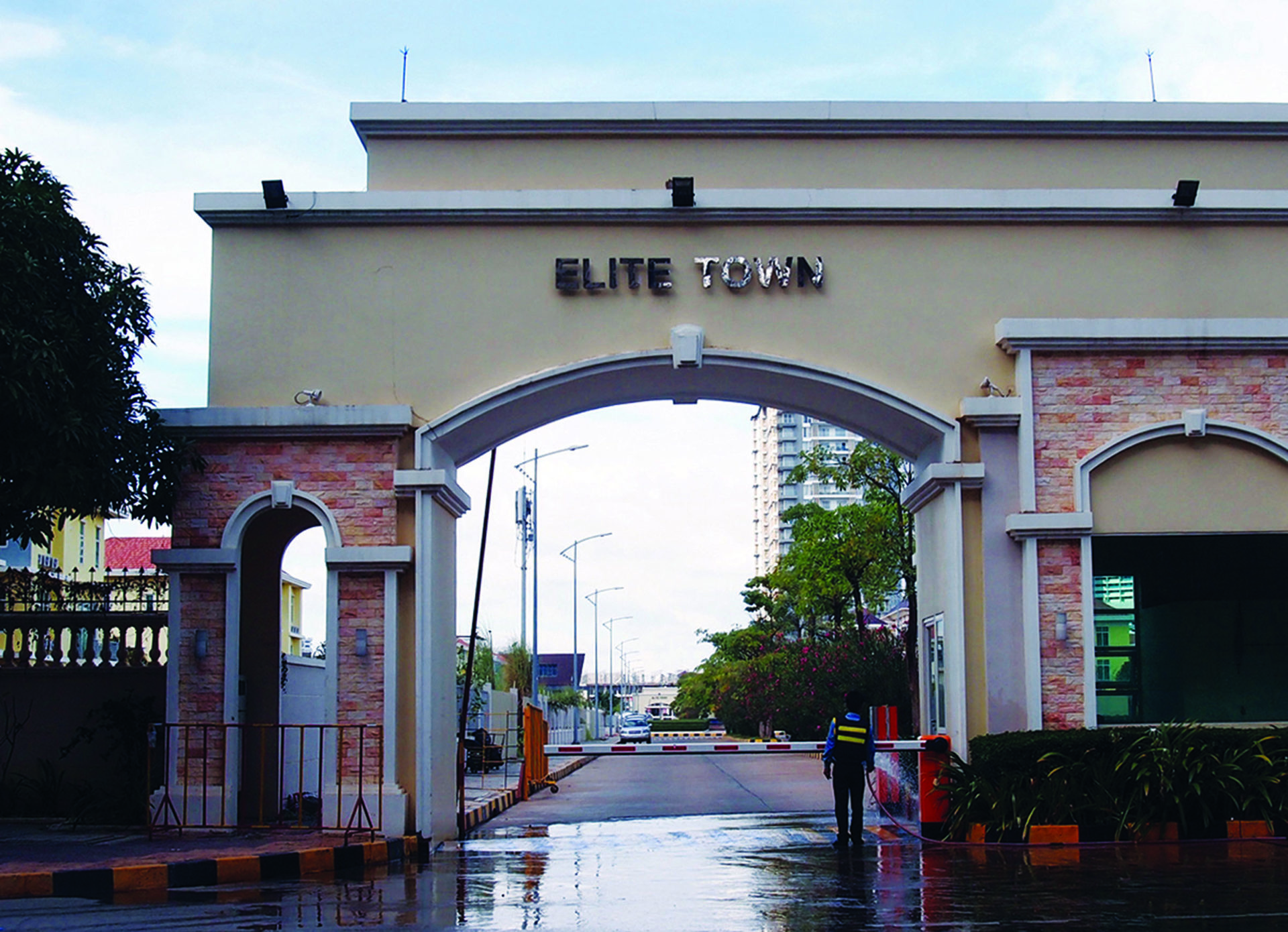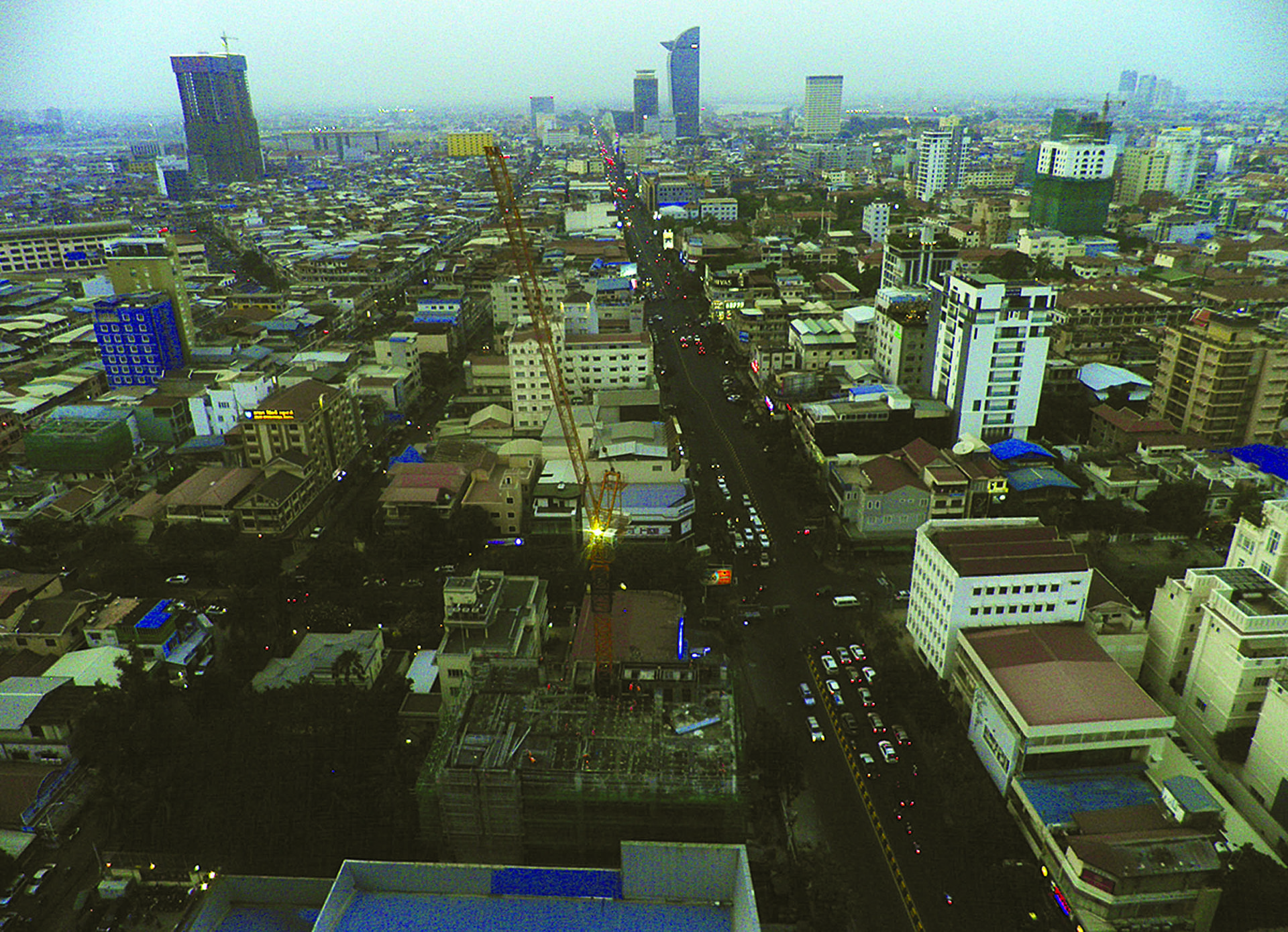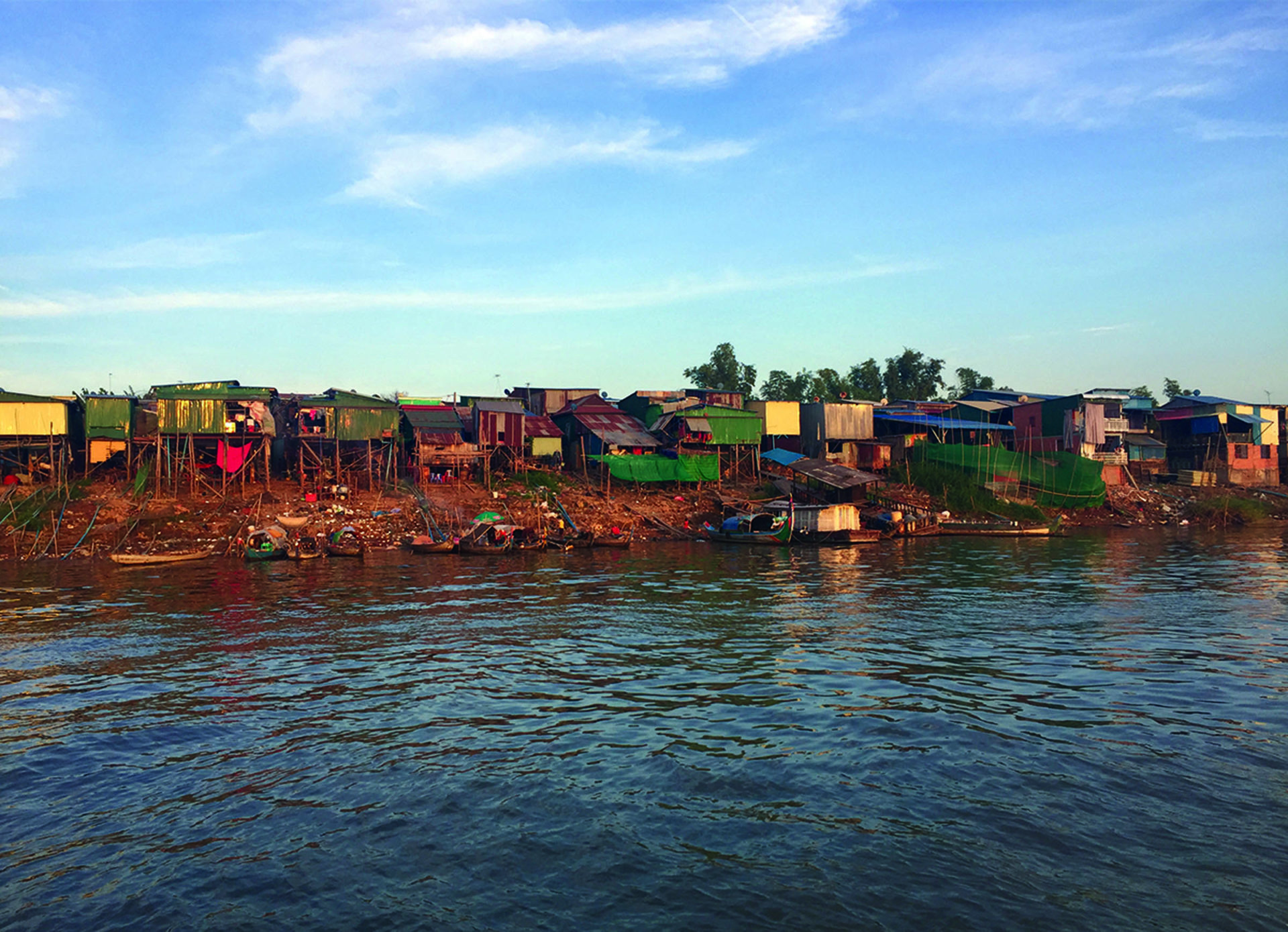On April 17 1975, Cambodia’s capital city Phnom Penh became a ghost town overnight after it was entirely emptied of its residents. This event, known as Year Zero, marked the brutal takeover of Cambodia by Pol Pot’s Khmer Rouge. From that point, all previous history and memory was erased in preparation for a new revolutionary way of life implemented on a tabula rasa. In pursuit of this radical communist vision, “New People” — teachers, artists, doctors, intellectuals — were singled out in a series of fatal purges. On top of this, Pol Pot’s agrarian vision necessitated drastic de-industrialization policies, which brought with them a staggering death toll. No Cambodian was left unaffected. Following four years of abandonment, survivors returning to the capital found significant buildings in ruins, animals grazing on wastelands, and their land titles destroyed.
Among the poorest countries in the world, Cambodia is now experiencing its longest period of peace and development since it became a nation state. Yet the wounds of the 1975-79 genocide are still too fresh for the country to truly reckon with. As landmarks of past horrors still stand in the capital, they also remain in the living memory of a large section of the city’s current population. For many, including the current government, the only way to deal with this all too recent trauma is to look to the future, open up the country’s economy and modernise. In that spirit, Phnom Penh has become a city of cranes. But with many of the new buildings only affordable to a small elite, resistance to this top-down modernisation is growing.
Cambodia’s current government has been in power since the fall of the Khmer Rouge. Led by ex-Khmer Rouge prime minister Hun Sen, the ruling party has revelled in the rapid development it has overseen. In 1995, the country transitioned from a planned to a market-driven economy, albeit remaining under the watchful eye of the state. To push forward development of the war-stricken country, new strategies were devised with the aim of strengthening the private sector through deregulation, privatization and free trade. Fast-paced development has been emboldened by land speculation and wealthy foreign investors. Year by year, the transition has brought with it an increasing GDP and a growing middle class. However, the uncontrolled marketisation has also widened the gulf between the rich and poor, leaving the most vulnerable behind.
In 2012, Hun Sen explained his philosophy of ‘making the bosses rich’ as the most effective way of reducing poverty, since ‘If a country has no millionaires, where can the poor get their money from?’ However, as is typical of this increasingly discredited ‘trickle down’ economic approach, the nepotistic ruling party has used this philosophy as an excuse to further entrench their position of power, stripping public resources and putting profits before people. In Transparency International’s 2017 Corruption Perception Index, Cambodia is considered the most corrupt country in Southeast Asia, with a rating as low as 161 of the 180 countries on the list. But the state has been able to justify its policies and the unequal balance of power again and again: publicly and consistently priding itself on maintaining relative peace and growth since Year Zero.
Even so, Phnom Penh remains an undeveloped city whose lively streets struggle to support all of its activity, from impromptu barbecues and roadside weddings to dusty construction work. Waste collection is sporadic, and fume-filled traffic jams are common. Increasing migration to the capital is putting growing pressure on the city’s already struggling infrastructure and pushing up land prices. With over 70% of people living on less than $3 a day, limited access to housing has resulted in growing slum communities. Despite the fact that Phnom Penh didn’t have traffic lights before 2000, Hun Sen’s new Cambodia is becoming increasingly dominated by luxury real estate within gated communities, and leisure centres equipped with shopping malls, casinos and nightclubs.
‘Beautification’ is the official term used to describe the state’s policy of development for the city, with imagery of parks, wide, clean roads, and restored colonial structures. The Beautification Plan runs parallel to the closest thing the city has to a master plan, ‘Phnom Penh Land Use for 2035’. However, the document released online is of such poor quality that it is, for the most part, illegible. A model was to be displayed within the city hall, but on attempted visits by the press and public it appears to have remained inaccessible. Without a coherent and transparent masterplan, fundamental issues within this emerging city — relating to waste collection, pollution, traffic and poverty — have been neglected. In describing the vision for Phnom Penh, the city’s former mayor, Chea Sophara famously said that: ‘we want to keep a high standard of living by not encouraging the poor to live in the city’.
The development which most embodies Cambodia’s vision of Beautification is exemplified by the suburb of Koh Pich, or Diamond Island. Diamond Island was once home to several hundred poor families who had, over many years, developed a basic farming and fishing community. Once investors set eyes on the site, the community was offered a buyout package. Some rejected the offer, either finding it insufficient or simply having nowhere else to go. These families were ultimately evicted by force, thereby making room for Phnom Penh’s faux-classical facsimile of the European riviera: complete with ornate fountains and statues, and its very own Arc de Triomphe.
The plan for the 100-hectare site at Diamond Island contains ‘cultural and tourism areas’: shopping malls, banquet halls, 5-star hotels, luxury real estate, and several schools. Ultimately, the aim is to create a city within a city; an exclusive, privately-owned and managed island. Several gated communities have already been realised, including the romantically-named La Seine, and Elite Town, which features streets named after prestigious American universities. The market for these luxury villas and condominiums essentially caters towards foreign buyers, with demand from the local elite limited by their small numbers. Indeed, while the official Cambodian minimum wage is just $170 per month, villas within these areas are valued between $600,000 and $1 million.
Another signature building project which elevates the elite’s vision for Cambodia to the level of parody is the Vattanac Capital Tower. Completed in 2014, it is currently the tallest building in Cambodia, looming over the mostly neglected buildings of Phnom Penh, and visible from virtually anywhere in the city. On its official website, the tower is described as ‘Phnom Penh’s most prestigious commercial address’. Yet with an occupancy rate under 30%, whether the city can support these types of projects is questionable. Meanwhile, to cap it all off, an unintentionally accurate slogan from the building’s developers proclaims, ‘Vattanac Capital will be a world of difference’.
Stepping into the building — lined with mostly empty Hugo Boss and Longchamp shops aimed at the city’s small ultra-elite — is a surreal transition from the dusty, raucous streets outside. There are several floors of office and hotel space that remain empty above this ghost shopping mall. In Cambodia, a relatively underdeveloped country for the 21st century, it is unclear how the existing urban environment of broken pavements and congested streets will be able to support such a large building. It seems that longer term, practical issues — such as how the enormous complex facade will be cleaned — have been overlooked, apparently deemed unimportant by the state when measured against the more significant potential of the building’s symbolic impact.
The Beautification Plan has been used to provide the much-criticised current government with an image of success to present to the outside world, as well as to local middle and upper classes. Ironically, given its optimistic name, the processes behind the Beautification Plan depend on exploitation of the communities the state governs and deeply ingrained corruption. As a result of this, forced eviction and land rights violations are some of the most critical issues faced by the urban poor in Phnom Penh. Following Year Zero, all records of land-ownership were destroyed. In resettled Phnom Penh, new rights of ownership began to be offered following reforms in 1989. But the absence of regulation, the complexity of the process, and a lack of demarcation between public and private land, also led to the development of several informal settlements.
Since the developments took place, many of these informal Cambodian communities have attempted to establish themselves legally. However, land ownership processes remain inaccessible to the average citizen due to lack of information and unspecified fees and bribes, which most are incapable of paying. Many Cambodians believe the process is intentionally convoluted to hinder the poor from gaining legal rights, particularly on land that is of interest to developers. A famous case of this favouring of elite developments over poor communities is at Boeung Kak Lake, one of several water bodies that have been filled-in to create valuable new development sites, despite the critical role they play in the city’s natural drainage system. The 4000 displaced people who once lived along the lake are still struggling for a piece of land to resettle on or, failing that, adequate compensation. There have been many cases in addition to those of Boeung Kak Lake in which the affordable housing promised after eviction settlements has never materialised. These forced evictions are known to have taken place violently and any attempts to protest have tended to be forcibly silenced.
Amid this institutionalized injustice, it is perhaps no surprise that resistance is steadily growing.The youth of Cambodia are better educated than their parents, in addition to being more prosperous and globally-connected. This new generation has little recollection of the past, and with characteristic Cambodian resilience, they are beginning to demand a new radical democracy. More and more communities have begun self-organising, and in the wake of increasing unrest, the ruling party is beginning to recognize the threat. The urban poor of Phnom Penh are watching developments carefully, and with the help of local and international NGOs, their voices are increasingly audible to both local and international audiences as they educate themselves on land and human rights.
In the case of Boeung Kak Lake, it was women and housewives who mobilised as passionate full-time protesters. Their peaceful yet radical strategies include standing naked outside the Parliament building to demonstrate their loss of dignity, and walking the city with bird nests on their heads to symbolize the basic need for any creature to have a home.
Phnom Penh is a city of contradictions. On the one hand it appears to be burgeoning, repairing and modernizing; yet on the other, behind the facade of Beautification, there is an ongoing struggle on the part of the poor to claim their dues: recognition, resources and their right to the city. The force of the state is relentlessly felt, yet those fighting against it seem undeterred; they deeply value small and large victories, with the unwavering optimism of post Khmer Rouge Cambodia.
